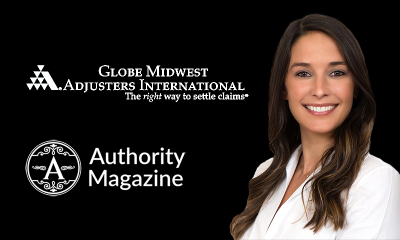Trusted Advisors: Helping your Clients Create a Comprehensive Risk-Management Strategy Based on Objective, Data-Driven Risk Reprioritization
Over the past several articles, our experts offered some insights into just how powerful a Trusted Advisor’s advice can be to a client, especially when they suffer a potentially life-changing disaster that affects their business or property. When clients suffer a disaster, they will likely reach out to you, regardless of your practice area or discipline, because they trust your judgment and that of your professional network. Accordingly, we armed you with a simple approach to help your clients identify any flawed assumptions about disaster planning and replace them with the correct ones.
Now that you helped your client identify and prioritize potential risks, what more can you do? The answer is provided in this article, where we focus on identifying the different risk-management options your client has available to them.
Recap of the Risk Probability Number (RPN) Analysis
In our last article we introduced the Risk Probability Number (RPN), which allows clients to determine the relative priority of risk of catastrophic damage to each portfolio asset. The RPN is based on the evaluation of two factors, (i) how likely the risk is, and (ii) how severe the risk’s impact could be, if it occurs, i.e.
RPN = Likelihood x Severity
Note: The larger the RPN, the higher the priority your client should give to taking an action as part of their risk-management strategy.
Risk-Management Options
Once you help your client identify the RPN for each asset, it is then time to create and implement a risk management strategy to address their exposures. Five very effective options are available to incorporate into your client’s risk-management strategy, as follows:
- Risk Reduction: take steps to reduce or eliminate the likelihood of the risk occurring;
- Risk Mitigation: take actions that reduce the severity of the event’s impact;
- Risk Contingency: have action-ready plans in place to continue to operate, if any assets are damaged or destroyed;
- Risk Sharing: insure a property at a level that is sufficient to cover part or all of the cost to recover from potential losses; and/or,
- Risk Acceptance: acknowledge that none of the above options fit within the current business model, i.e., the benefit of the option does not outweigh the cost of its implementation.
Keep in mind that these five are not mutually exclusive – they can be used together, for each asset, to ensure optimal risk protection.
Application of the RPN Analysis
For illustrative purposes, let us assume a hurricane hits your client’s warehouse on the coast of Florida. What we gathered from the RPN analysis is that the probability of severe damage to the warehouse is high based on its location. Knowing this, we then turn to the options listed above to determine which one, or combination of those risk-management options, is most appropriate. For instance, we might acknowledge that moving the warehouse to another location (i.e., “risk reduction”), is not an option; but, strengthening the structure to better withstand damage from a severe hurricane (i.e., “risk mitigation”) might be.
Alternatively, in the situation where the Florida warehouse is one of several across the country, your client can maintain continuity of operations by putting in place a contingency plan that is activated when the warehouse is damaged or destroyed (i.e., “contingency planning”). While the contingency plan has been activated, your client still needs to face the reality that the warehouse needs to be repaired or rebuilt, the damaged contents replaced, and operation restored to normal. The financial resources needed to accomplish this are hopefully available through the property insurance your client previously obtained to protect themselves against just this kind of disaster (i.e., “risk sharing”).
The final option, “Risk Acceptance,” should only be utilized when the business decides that it is willing to accept a property loss because the financial benefit of having a warehouse in Florida outweighs the cost associated with implementing any of the other four options. Risk Acceptance is typically used for a relatively low-value asset or where the RPN for a specific risk is considered sufficiently small.
Tying It All Together
Most risk strategies for a given property or an entire organization will combine multiple elements of the five risk-management options described above. Finding the right balance between these elements for each asset is a key part of your client’s risk strategy.
It is important that your client recognize that no risk-management plan is perfect. However, the guidance that you provide your client to plan for what arguably could be one of the most impactful and stressful events in their business lives, can be the most valuable advice that you ever provide.
In the next article in this series, we will focus on how you, as a Trusted Advisor, can further help your clients by offering them insights on how to leverage their disaster recovery process to further enhance and strengthen their business.
Download this blog as an eBook by clicking here.
As the Midwest’s largest and oldest public adjusting firm, Globe Midwest™ Adjusters International’s core focus is exclusively representing property and business owners, during the insurance claim process, to maximize and expedite our clients’ insurance claim settlement. With offices in Southfield and Grand Rapids, Michigan, Chicago, Illinois, and Appleton, Wisconsin we are experienced with the types of natural disasters that strike the Midwest, the companies that insure here, and how local claims are handled.













